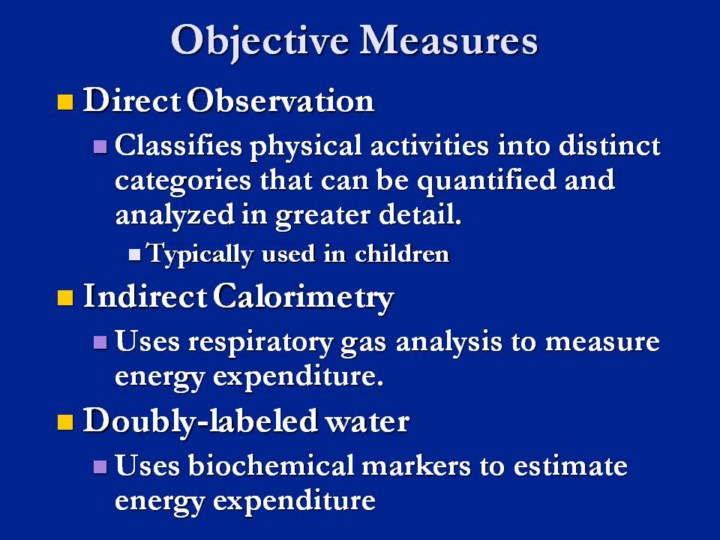| front |1 |2 |3 |4 |5 |6 |7 |8 |9 |10 |11 |12 |13 |14 |15 |16 |17 |18 |19 |20 |21 |22 |23 |24 |25 |26 |27 |28 |29 |30 |31 |32 |33 |34 |35 |review |
 |
Direct Observation not only measures physical activity, but also identifies the type and specifics (when, where, and with whom) of the activity. In recent years, it has been mainly used in children. PROS. Direct observation provides both quantitative and qualitative information on an individualís physical activity. Also, physical activity behaviors can be specifically targeted due to the fact that physical activity categories are established a priori. CONS. Direct observation involves a time and labor-intensive data collection; therefore, it may not be feasible for use in large epidemiological studies. Also, the observerís presence may alter the participantís normal physical activity patterns. Finally, there is limited research regarding the validation of direct observation against physiological criteria.
Indirect Calorimetry measures oxygen consumption and carbon dioxide production over short or long periods of time. For short durations, participants wear a face mask during rest and/or exercise. For longer durations, individuals are confined to a metabolic chamber. Doubly-Labeled Water is a biochemical procedure that estimates energy expenditure through the use of markers that reflect the rate of metabolism in the body. During the procedure, two stable isotopes of water are ingested by the study subject. After a 1 to 2 week period, investigators determine how quickly the body lost the water isotopes. The water isotopes can be lost through urine, sweat, and/or evaporation. The investigators measure the difference between the rate of loss of the two water isotopes to determine energy expenditure. PROS. Indirect calorimetry and doubly-labeled water are precise and accurate measures of total energy expenditure. CONS. Both indirect calorimetry and doubly-labeled water have high participant burden and both measures are costly; therefore, may not be feasible in large epidemiological studies.
Recommended Reading: Welk GJ (2002). Physical activity assessments for health-related research. Champaign, IL: Human Kinetics. |